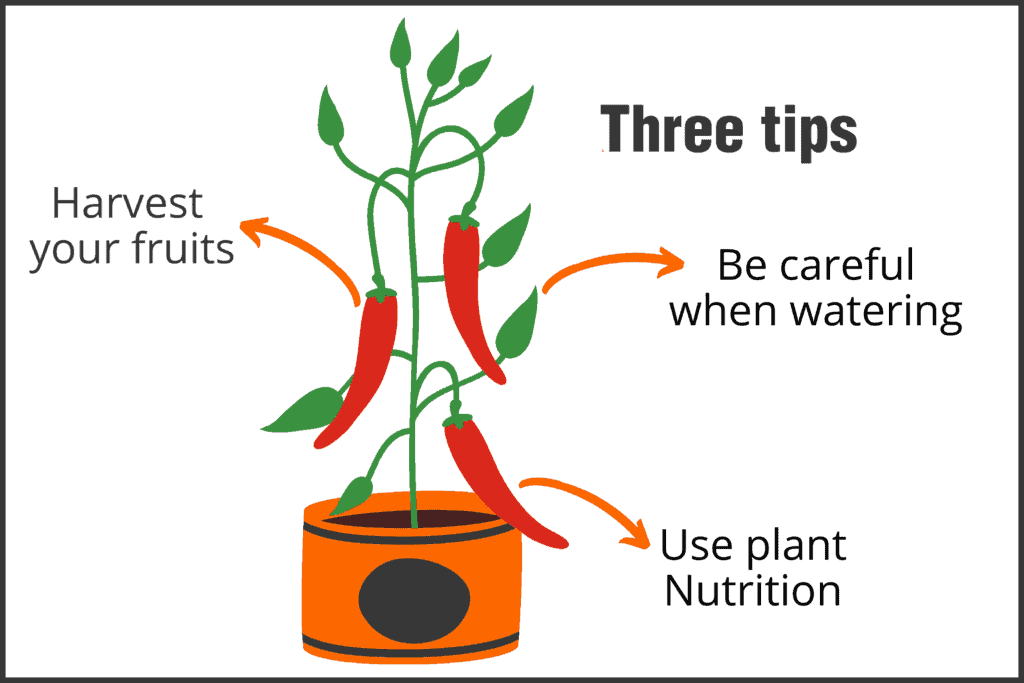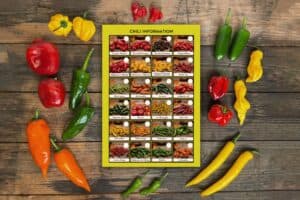
Delicious to make with cold weather: red pepper soup
What is delicious to eat on a cold winter day? A homemade soup, of course! Read our blog with recipe for a red pepper soup, to boost your immune system and stay warm.

A pepper plant on your balcony or in your garden looks very nice of course, but it is even nicer if you can harvest your own homegrown peppers. We regularly receive questions from people who do this at home. Many people manage to soak up a few plants from seed in the spring. But after this it sometimes goes wrong, because if your pepper plant has survived all the gusts of wind, torrential downpours and the hottest week in June, the moment comes when there are quite a few fruits hanging on the plant. And that's when your plant starts to struggle.
Often the plant is in a pot on the balcony or in the backyard in the open ground. At this time, the pepper plant needs a lot of nutrition because it is full of fruits that demand everything from the plant. Often the basic nutrition in the potting soil or garden soil runs out at this stage, so you need to supplement it. Sprinkling fertilizer pellets is of little use, as these are made to slowly release their nutrition and your pepper plants need nutrition 'now'. You can often notice a lack of nutrition by discolored leaves and leaf fall (leaf loosening). Use liquid fertilizer, you can buy these everywhere these days and even a 'cheaper' bottle at the supermarket or Action will do just fine. Just stick to the dosage on the label and little can go wrong.
As a true enthusiast, you are naturally very proud when you have succeeded in getting your plant full of colorful peppers and would prefer to have it completely full of red peppers. Unfortunately, your plants think otherwise and it is a must to regularly harvest the ripe fruits. You will see that this way you will end up getting more fruits from your plants.
When the longest day has been at the end of June and you are carefully moving toward August with a plant full of peppers, you must be careful not to overwater, because a pepper plant does not like that either. pepper plants by nature do not have a giant sturdy root system and therefore the danger of over-watering is great. A good tip is if your plant is in a pot to lift it occasionally to estimate its weight. You will then get an idea of the weight of the pot when your plant is happy. If the weight of the pot is still good, you can skip watering at those moments or just water a little bit. It is also no great secret that most houseplants in the living room meet their demise from too much rather than too little water.

What is delicious to eat on a cold winter day? A homemade soup, of course! Read our blog with recipe for a red pepper soup, to boost your immune system and stay warm.

We are fans of Nick Toet and his YouTube channel Food with Nick! Every week he shares new recipes and often uses chilies to flavor the dishes. Check out the videos where he uses Westlandpeppers peppers here.

Scoville scale explained: How spicy are your favorite peppers? Unsure which pepper to choose or how spicy a particular pepper is? Read our blog with a full scoville scale of all our peppers here.
| Monday | from 8:00 a.m. to 5:00 p.m. |
|---|---|
| Tuesday | from 8:00 a.m. to 5:00 p.m. |
| Wednesday | from 8:00 a.m. to 5:00 p.m. |
| Thursday | from 8:00 a.m. to 5:00 p.m. |
| Friday | from 8:00 a.m. to 5:00 p.m. |
| Saturday | from 8:00 a.m. to 12:00 p.m. |
| Sunday | Closed |
Burg. Crezeelaan 44A
2678 KZ De Lier
The Netherlands
© Westlandpeppers | Webshop by Buro Staal

Monday, Easter Monday, the web shop will be closed. Orders placed after Friday morning 10:00 a.m. will be processed Tuesday, April 22. Happy Easter! 🐣